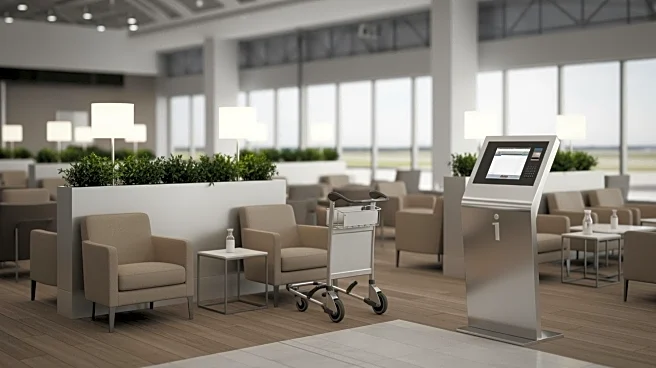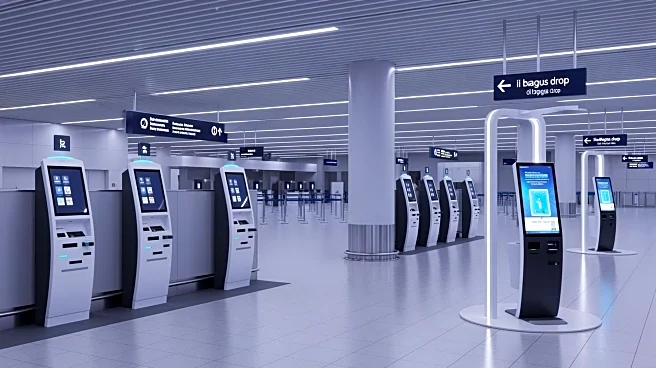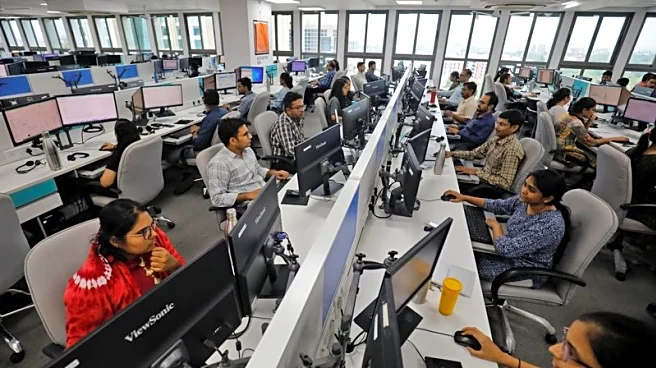What's Happening?
Union Aviation Minister Ram Mohan Naidu inaugurated the newly refurbished Terminal 2 (T2) at Indira Gandhi International Airport in New Delhi. The terminal underwent a comprehensive upgrade to improve
passenger experience and accommodate increasing traffic. Key features include self-baggage drop facilities, DigiYatra facial recognition technology, and real-time wait time trackers. The terminal now supports around 120 daily domestic flights operated by Air India and IndiGo, aiming to reduce congestion during peak travel periods. The renovation also introduced six autonomous boarding bridges and modern skylight designs to enhance comfort and efficiency.
Why It's Important?
The upgrade of Terminal 2 is significant for India's aviation sector, as it addresses the growing demand for air travel and enhances operational efficiency at one of the country's busiest airports. The introduction of advanced technologies like DigiYatra and autonomous boarding bridges reflects a shift towards more streamlined and contactless travel experiences. This development is expected to benefit airlines by reducing turnaround times and improving passenger satisfaction. Additionally, the increased capacity will help manage the surge in travelers during festive seasons, potentially boosting tourism and economic activity in the region.
What's Next?
With the inauguration of the upgraded Terminal 2, stakeholders in the aviation industry may anticipate further technological advancements and infrastructure improvements at other major airports across India. The successful implementation of these features could serve as a model for future projects, encouraging investment in airport modernization. Airlines and passengers alike will likely monitor the impact of these changes on travel efficiency and customer experience, potentially influencing future policy decisions and industry standards.
Beyond the Headlines
The modernization of Terminal 2 at Delhi Airport may have broader implications for India's transportation infrastructure, highlighting the importance of integrating technology to meet evolving passenger needs. The focus on contactless and efficient travel solutions aligns with global trends towards safer and more sustainable travel practices. This development could also prompt discussions on the ethical use of facial recognition technology and data privacy, as airports increasingly adopt such systems.












